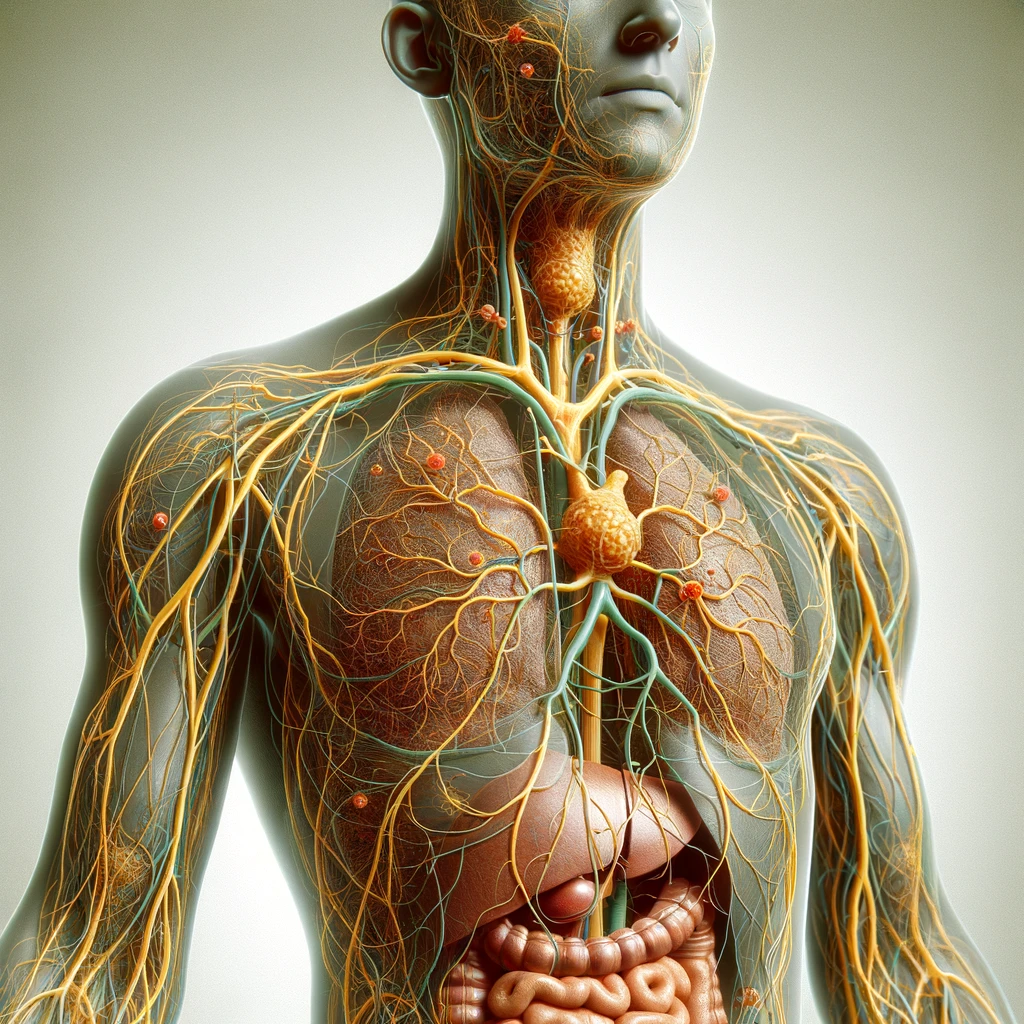The Lymphatic System: Your Body’s Defense Network

Understanding the Lymphatic System
What is the Lymphatic System?
Definition and Function
The lymphatic system is a vital part of the immune system, consisting of a network of lymphatic vessels, lymph nodes, and organs such as the spleen and thymus. Its primary functions include transporting lymph, a fluid containing infection-fighting white blood cells, throughout the body, removing toxins and waste, and defending against infections.
Major Components of the Lymphatic System
Lymphatic Vessels
Lymphatic vessels are thin-walled tubes that carry lymph throughout the body. These vessels are similar to blood vessels but carry lymph instead of blood. They play a crucial role in maintaining fluid balance and transporting lymph to lymph nodes for filtration.
Lymph Nodes
Lymph nodes are small, bean-shaped structures located along the lymphatic vessels. They filter lymph, trapping bacteria, viruses, and other foreign substances, which are then destroyed by specialized white blood cells called lymphocytes. Lymph nodes are concentrated in areas such as the neck, armpits, and groin.
Spleen and Thymus
The spleen, located in the upper left abdomen, filters blood, recycles old red blood cells, and helps fight infections. The thymus, located behind the sternum, is where T-cells (a type of lymphocyte) mature and become capable of attacking infected or cancerous cells.
The Importance of Lymphatic Health
Common Disorders
Disorders of the lymphatic system can include lymphedema (swelling due to lymph fluid buildup), lymphadenopathy (swollen lymph nodes), and cancers such as lymphoma. These conditions can impair immune function and overall health.
Maintaining Health
Maintaining a healthy lymphatic system involves regular exercise, staying hydrated, eating a balanced diet, and practicing good hygiene. Regular check-ups with a healthcare provider can help detect and manage any lymphatic system issues early.
The lymphatic system is essential for maintaining immune function and overall health. Understanding how it works and taking steps to support its health can prevent many disorders and enhance your well-being. By caring for your lymphatic system, you contribute to a stronger, more resilient body.
“Prevention is better than cure.”
Sign up for our free newsletter to receive a detailed PDF about the lymphatic system, including tips for maintaining its health and preventing common disorders. Stay informed and take control of your lymphatic health today!
- The Role of the Lymphatic System in Immunity
- Common Lymphatic Disorders and Their Symptoms
- Tips for Maintaining a Healthy Lymphatic System

El Sistema Linfático: La Red de Defensa de Tu Cuerpo
Entendiendo el Sistema Linfático
¿Qué es el Sistema Linfático?
Definición y Función
El sistema linfático es una parte vital del sistema inmunológico, que consiste en una red de vasos linfáticos, ganglios linfáticos y órganos como el bazo y el timo. Sus funciones principales incluyen transportar linfa, un líquido que contiene glóbulos blancos que combaten infecciones, por todo el cuerpo, eliminar toxinas y desechos, y defenderse contra infecciones.
Componentes Principales del Sistema Linfático
Vasos Linfáticos
Los vasos linfáticos son tubos de paredes delgadas que transportan linfa por todo el cuerpo. Estos vasos son similares a los vasos sanguíneos pero transportan linfa en lugar de sangre. Desempeñan un papel crucial en el mantenimiento del equilibrio de líquidos y el transporte de linfa a los ganglios linfáticos para su filtración.
Ganglios Linfáticos
Los ganglios linfáticos son pequeñas estructuras en forma de frijol ubicadas a lo largo de los vasos linfáticos. Filtran la linfa, atrapando bacterias, virus y otras sustancias extrañas, que luego son destruidas por glóbulos blancos especializados llamados linfocitos. Los ganglios linfáticos se concentran en áreas como el cuello, las axilas y la ingle.
Bazo y Timo
El bazo, ubicado en la parte superior izquierda del abdomen, filtra la sangre, recicla los glóbulos rojos viejos y ayuda a combatir infecciones. El timo, ubicado detrás del esternón, es donde los linfocitos T (un tipo de linfocito) maduran y se vuelven capaces de atacar células infectadas o cancerosas.
La Importancia de la Salud Linfática
Trastornos Comunes
Los trastornos del sistema linfático pueden incluir linfedema (hinchazón debido a la acumulación de líquido linfático), linfadenopatía (ganglios linfáticos hinchados) y cánceres como el linfoma. Estas condiciones pueden afectar la función inmunológica y la salud general.
Manteniendo la Salud
Mantener un sistema linfático saludable implica hacer ejercicio regularmente, mantenerse hidratado, comer una dieta equilibrada y practicar una buena higiene. Las visitas regulares al proveedor de atención médica pueden ayudar a detectar y manejar cualquier problema del sistema linfático temprano.
El sistema linfático es esencial para mantener la función inmunológica y la salud en general. Entender cómo funciona y tomar medidas para apoyar su salud puede prevenir muchos trastornos y mejorar tu bienestar. Al cuidar tu sistema linfático, contribuyes a un cuerpo más fuerte y resiliente.
“Más vale prevenir que curar.”
Suscríbete a nuestro boletín gratuito para recibir un PDF detallado sobre el sistema linfático, incluyendo consejos para mantener su salud y prevenir trastornos comunes. ¡Mantente informado y toma el control de la salud de tu sistema linfático hoy!
Titulares Principales para Dividir
- El Papel del Sistema Linfático en la Inmunidad
- Trastornos Comunes del Sistema Linfático y Sus Síntomas
- Consejos para Mantener un Sistema Linfático Saludable